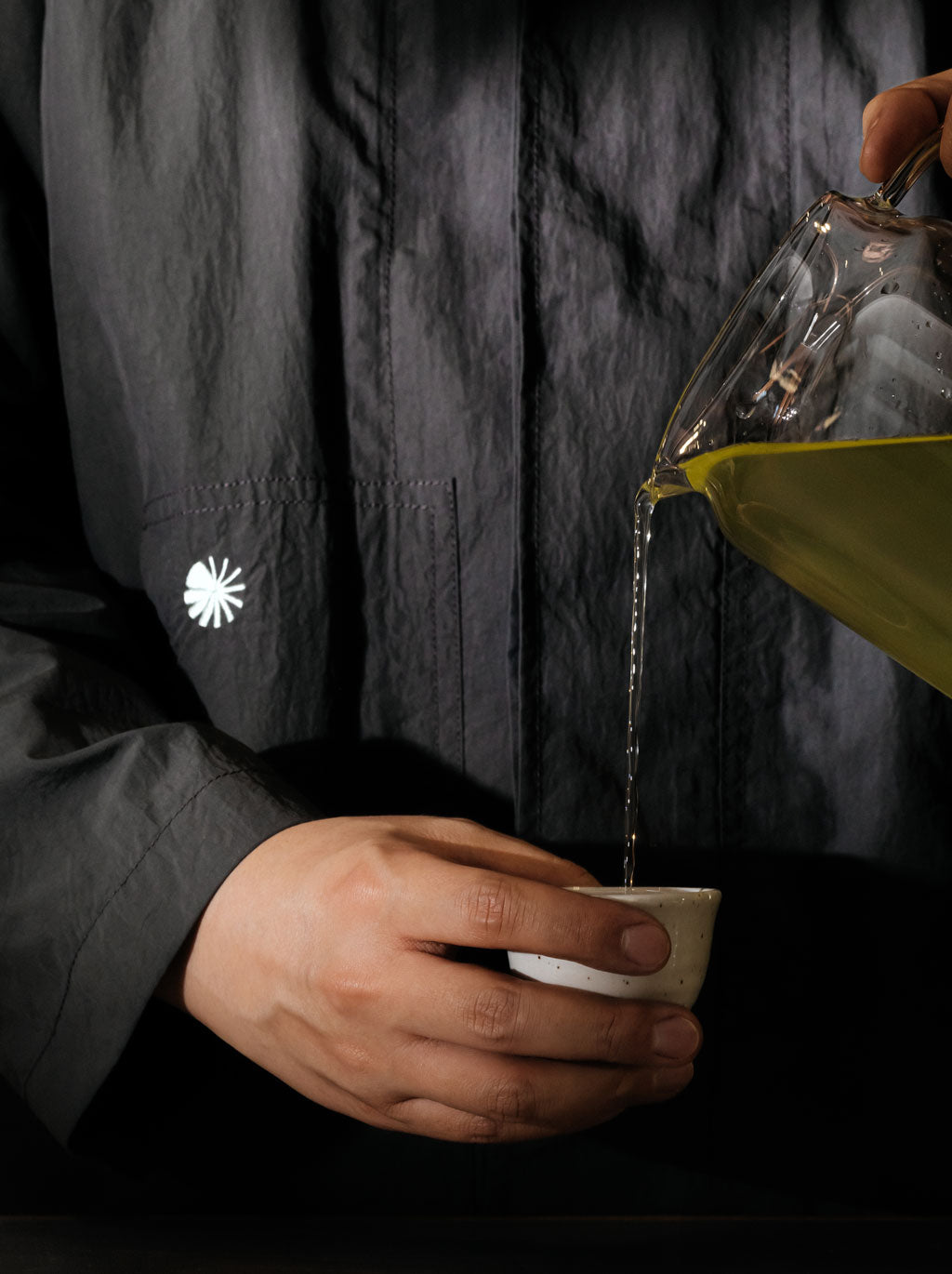Welcome to a journey through the rich and diverse world of Korean tea. Whether you're a seasoned tea enthusiast or someone just beginning to explore the flavors and traditions of this ancient beverage, Korean tea offers a unique experience that stands apart from its counterparts in other parts of the world. From its historical roots and distinctive production areas to the mindful preparation methods and cultural significance, Korean tea embodies a blend of simplicity, naturalism, and deep cultural heritage. Join us as we delve into the nuances of Korean tea culture, compare it with the tea traditions of neighboring countries, and uncover the stories and practices that make Korean tea truly special.

The Essence of Korean Tea Culture and History
Korea's tea culture is closely tied to its history and spirituality, offering a calm and thoughtful experience. Unlike the more known tea cultures of China and Japan, Korean tea rituals focus on harmony, respect, and mindfulness, making each tea session a meditative journey. Tea was introduced to Korea from China around the 7th century, mainly through Buddhist monks who valued its meditative properties. Over the centuries, tea became a part of Korean cultural and spiritual life. The Goryeo and Joseon Dynasties saw the establishment of tea ceremonies that emphasized simplicity, naturalism, and inner peace.

Tea Production Areas in Korea
1. HadongHadong, in southern Korea, is considered the birthplace of Korean green tea. This region's high mountains and clean, mineral-rich waters create the perfect environment for producing delicate, aromatic teas. Hadong green tea is known for its subtle sweetness and fresh, grassy notes.
2. Boseong
Boseong, with its rolling green hills and scenic views, is the largest tea-producing area in Korea. The region is famous for its green tea, which has a rich flavor and vibrant green color due to the fertile soil and good growing conditions. Boseong's tea plantations are a popular tourist destination, offering visitors a chance to experience tea harvesting and processing firsthand.
3. Jeju IslandJeju Island, with its volcanic soil and mild climate, produces some of Korea's most unique and flavorful teas. The island's teas, including green and black varieties, are known for their rich taste and aromatic qualities. Jeju's tea plantations also offer breathtaking views and a peaceful environment for tea tasting. Osulloc is the most well known farm in the island which draws many tourists and tea lovers.
The Art of Korean Tea Preparation
Korean tea preparation, known as "Dado (茶道)" or the way of tea, emphasizes simplicity and mindfulness. The process involves selecting the finest tea leaves, carefully measuring the right amount, and brewing the tea at the correct temperature to extract its full flavor and aroma.
A traditional Korean tea ceremony is a graceful and meditative practice. The host, often dressed in traditional hanbok, meticulously prepares the tea, focusing on each movement's precision and elegance. The ceremony typically involves several steps:
- Warming the Teapot and Cups: To ensure the tea's temperature is maintained.
- Measuring and Adding Tea Leaves: Using a bamboo scoop to handle the delicate leaves.
- Pouring Hot Water: At the optimal temperature, usually around 80-90°C (176-194°F) for green tea.
- Steeping and Pouring the Tea: Carefully timing the steeping process and pouring the tea into small cups to share with guests.

Different Tea Cultures in Korea, China and Japan
When comparing Korean and Chinese teas, several key differences stand out. Firstly, the flavor profiles of these teas vary significantly. Korean teas, especially green teas, tend to be lighter and sweeter. In contrast, Chinese teas offer a broader range of flavors, from the delicate notes of green tea to the robust and earthy tones of oolong, black, white, and pu-erh varieties. This diversity reflects China's vast tea-growing regions and long history of tea cultivation.
The tea rituals in Korea and China also differ. Korean tea ceremonies emphasize natural simplicity and mindfulness. These ceremonies are quiet, reflective experiences that focus on the harmony between the drinker and the tea. On the other hand, Chinese tea ceremonies, such as Gongfu Cha, are more elaborate. They involve multiple infusions of the same leaves, allowing tea drinkers to savor the evolving flavors over several brews. The complexity of these rituals highlights the intricate art of Chinese tea brewing.
Additionally, the ingredients used in Korean and Chinese teas can vary. Korean teas often incorporate unique elements like persimmon leaves or pine needles, which add distinctive flavors and health benefits. These ingredients reflect Korea's emphasis on natural and holistic approaches to tea.

When it comes to Japanese tea culture, preparation and presentation are paramount. The Japanese tea ceremony, particularly the preparation of matcha, is highly formalized. Every movement is precise, and the aesthetics of the tea setting are meticulously arranged. This ceremony reflects a deep cultural appreciation for discipline, beauty, and the art of tea.
In contrast, Korean tea ceremonies, while also mindful, are less rigid. The focus is more on the natural flow and tranquility of the experience rather than strict adherence to form. This approach creates a relaxed and harmonious atmosphere that allows for personal connection and introspection.
The types of tea popular in Korea and Japan further illustrate these cultural differences. Japan is renowned for its matcha, a powdered green tea that is whisked into a frothy beverage, and sencha, a common steamed green tea. Korea's most popular teas include nokcha, a type of green tea, and fermented teas like Daejak. These Korean teas offer a range of flavors and preparation methods that reflect the country's diverse tea culture.

The Importance of Tea in Korean Culture
Tea in Korean Cinema
Tea has also found its way into Korean cinema, often symbolizing tranquility, reflection, and cultural heritage. Notable films that highlight tea culture include:
- Spring, Summer, Fall, Winter... and Spring (2003): This film beautifully showcases the meditative aspects of Korean tea culture within a Buddhist temple setting.
- A Little Monk (2003): The film portrays the simple yet profound life of monks, including their tea rituals as part of their daily practices.
Korean tea history is filled with intriguing stories that highlight its cultural and political significance. One notable aspect is the use of tea as a tribute during the Goryeo Dynasty. During this period, Korean tea was sent to the Chinese court as a tribute, symbolizing its high value and importance. This practice not only indicated the quality and uniqueness of Korean tea but also reinforced diplomatic and cultural connections between Korea and China.
Additionally, tea played a significant role in politics. Tea ceremonies were often utilized as diplomatic tools, fostering relationships and demonstrating respect between nations. The act of sharing tea in a formal setting allowed leaders to engage in dialogue, build trust, and strengthen alliances. These ceremonies were not just about the beverage itself but also about the values of hospitality, respect, and mutual understanding that the act of sharing tea represented. Thus, the history of Korean tea is not only a story of a beloved drink but also a reflection of its broader cultural and political impact.

How to Appreciate Korean Tea
To truly appreciate Korean tea, one must understand the various aspects that make it unique.
Types of Korean Tea:
- Green Tea (Nokcha): The most popular type, known for its fresh and delicate flavor.
- Fermented Tea (Daejak): A robust tea with a deep, earthy taste, often enjoyed in colder months.
- Herbal Teas: Including blends with persimmon leaves, ginger, and jujube, each offering unique health benefits and flavors.
Tea Grades:
Korean teas are often graded based on the quality of the leaves and the timing of the harvest:
Korean teas are often graded based on the quality of the leaves and the timing of the harvest, which greatly influences their flavor and characteristics. At the pinnacle of quality is Ujeon, or the First Flush. This tea is made from the youngest and most tender leaves picked before the April rains. The delicate nature of these early leaves results in a tea of exceptional quality, prized for its fresh and subtle flavor.
Next is Sejak, or the Second Flush. This tea is produced from slightly more mature leaves that are picked after the initial harvest. Sejak offers a balanced flavor, combining the freshness of young leaves with a fuller taste that develops as the leaves mature. It strikes a harmonious balance that is appreciated by many tea enthusiasts.
Finally, there is Jungjak, or the Third Flush. This tea is harvested later in the season, resulting in a stronger and more robust taste. The leaves have had more time to mature, which imparts a deeper and more pronounced flavor to the tea. Jungjak provides a richer and more intense experience, making it a popular choice for those who enjoy bolder flavors in their tea.

Equipment and Tools
To fully enjoy Korean tea, having the right equipment is essential:
- Teapot (Dahgwan, 다관): Typically made of ceramic or porcelain, designed to retain heat and enhance the tea's flavor.
- Teacups (Dahjan, 다잔): Small cups that allow for savoring the tea's aroma and taste.
- Tea Scoop (Cha Sab, 차삽): A bamboo or wooden scoop used to measure tea leaves.
- Tea Strainer (Cha Yeogwagi, 차 여과기): Used to strain tea leaves from the brewed tea.
- Tea Tray (Cha Pan, 차판): A tray to hold the teapot and cups, often beautifully crafted.
Conclusion
Korean tea culture offers a unique blend of history, spirituality, and culinary delight, making it a fascinating subject for tea enthusiasts and cultural explorers alike. Whether you are new to the world of tea or a seasoned connoisseur, the serene and mindful practices of Korean tea ceremonies provide a refreshing perspective on this ancient tradition.
By understanding and appreciating the differences between Korean, Chinese, and Japanese tea cultures, we gain a deeper insight into the rich tapestry of Asian tea heritage. As you sip, savor, and explore, may each cup bring you closer to the heart of Korea's timeless tea traditions.
For more insights into the world of tea and to discover the best teas from Korea, China, and Japan, stay tuned to our blog and join our community of passionate tea lovers.

Keywords: Korean tea, green tea, Korean drinking, Asian tea



